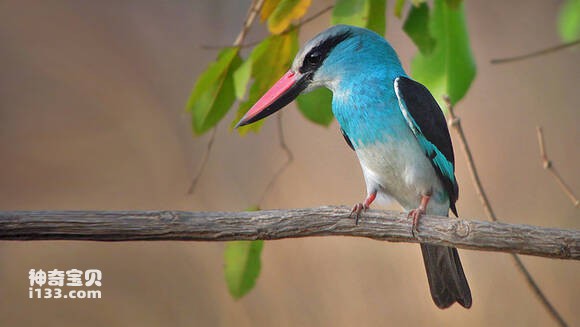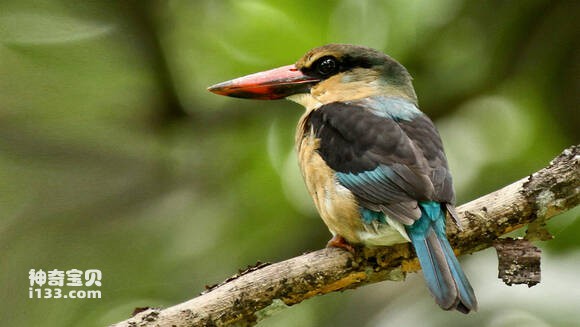Halcyon malimbica
IUCN
LCBasic Information
Scientific classification
- name:Halcyon malimbica
- Scientific Name:Halcyon malimbica,Blue-breasted Kingfisher
- Outline:Climbing birds
- Family:
Vital signs
- length:About 25 cm
- Weight:66-94g
- lifetime:No textual research information is available
Feature
The adult bird has a grayish-brown forehead and is the largest kingfisher in Africa
Distribution and Habitat
Blue chest jade is distributed in central and southern Africa (including the southern Arabian Peninsula, the Sahara Desert (Tropic of Cancer) south of the entire African continent.)
Blue-breasted jadeites live in a variety of different forest environments: secondary forests, mangroves, tropical rainforests, coastal forests, and lush savannas. From sea level to about 1800 meters above sea level. Its field and scope almost cover the African equator.
Appearance
The blue-breasted jade is 25 cm long and weighs 66-94g for males and 70-93g for females. Adult bird forehead white gray brown.
The eyebrows have a white line marking the boundary between the crown of the head and the line of the eyes. The top of the head is dark brown. There is a black triangle in front of and behind the eyes. The neck, top and back, cheeks and sides of the neck are blue. Lower back, upper back, shoulder blades, and front wings are black. The lower back and tail are bright sky blue, with a dark blue tail. There are small white square spots on the chin and throat, separated by blue-green on the chest. The tail is grayish white along the sides of the abdomen. The underside wings are white and the tail is shiny black. The upper jaw has a beautiful bright red color, the irises are dark brown, and the legs are dark red. Young birds differ from adults in their blue-green tops. There is a green under the blue head. The chin and abdomen are pale yellow rather than white. Th
Details
Halcyon malimbica, Blue-breasted Kingfisher, has four subspecies (1.Halcyon malimbica torquata is found in Mali and Senegal). 2.Halcyon malimbica forbesi is found in Nigeria and Cameroon. 3.Halcyon malimbica dryas is found in SAO Tome and Principe. 4.Halcyon malimbica malimbica is found in Sudan, Uganda, Tanzania, Cameroon, Angola, Zambia and Ethiopia. .

As hunted by most kingfishers, the blue-breasted emerald is not a complete carnivore. It consumes some fruits and vegetables, such as oil palm. In addition, it is mainly invertebrates: cockroaches, crickets, termites, wasps, beetles, spiders, scorpions, crabs and mollusks. They also eat small vertebrates, frogs, toads, lizards and mice.

The blue-breasted emerald burrows into the tree trunk for its nest. 6 to 10 meters above the ground. Usually two eggs are laid. The spawning season depends on the region: August to September in Guinea-Bissau, March to April in Ghana, January to June in Nigeria, August to June in Cameroon and Gabon, October to December in SAO Tome and Principe, and April in Uganda.

Listed on the International Union for Conservation of Nature (IUCN) Red List Protection Level: Not Threatened (LC).
Protect wild animals and eliminate wild meat.
Maintaining ecological balance is everyone's responsibility!








